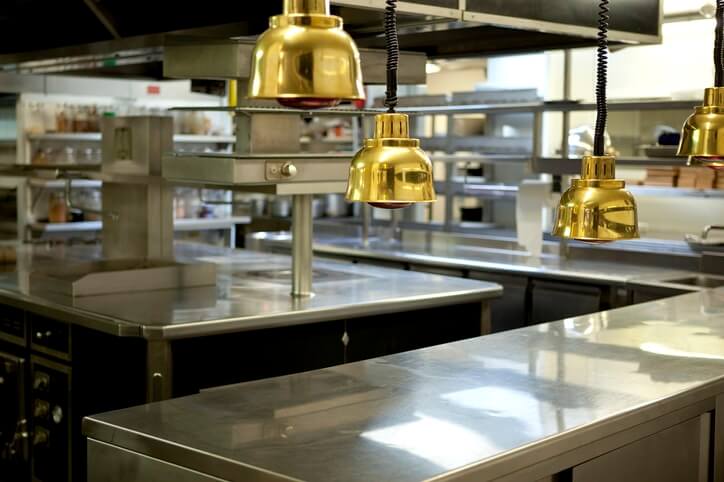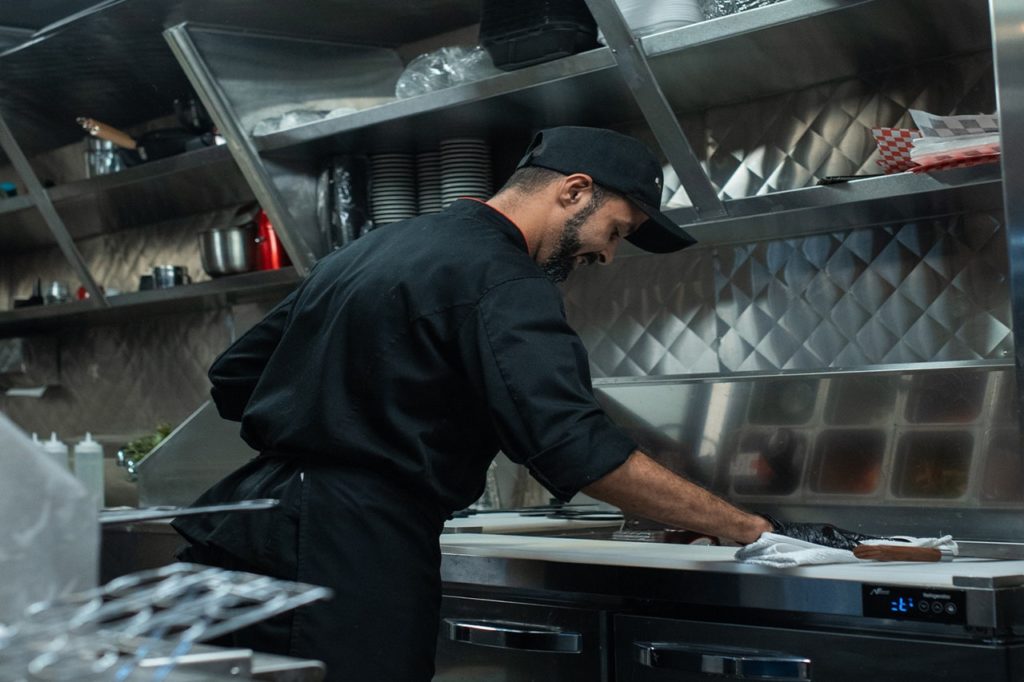Good hygiene in any kitchen is a given. However, commercial kitchens are a lot tougher to clean and keep clean, due to their size. With the amount of food and cooking and people and hands that are involved in the running of a commercial kitchen, it’s extremely common for nasty germs to surface and get out of hand.
The problem is, once you have a germ problem on your hands, the liabilities are huge. It’s for this reason that regular and professional cleaning is essential.
Tasks to maintain hygiene in your commercial kitchen
The simplest and most effective way to ensure that your kitchen’s hygiene is up to standard is to keep a checklist of tasks that should be carried out on a weekly and monthly basis. Let’s take a look at a few that shouldn’t go undone:
- Grease trap
Clean your grease filters as well as grease traps regularly.
- Loose items
Clean the deep fryers, exhaust hoods, and any loose bits of equipment every week.
- Ventilation
Weekly ventilation checks are crucial to avoid the breeding of germs.
- Food prep
Ensure that all staff members are following a strict hygiene protocol at all times. Often a staff member’s personal hygiene can start a problem in a busy kitchen.
- Floor cleaning
This should be regularly done with a standard protocol for products and methods.
- Ceiling and wall cleaning
This is a weekly and monthly task for any commercial kitchen. Deep cleaning is required.
- Food quality
The storage and prep of food are paramount to avoid cross-contamination. Be sure to always only use fresh food to lessen the chances of attracting unwanted pests.
- Disposal
Strict waste disposal is non-negotiable. Off cuts and crumbs of food are the first things to attract pests. Make sure that staff follows a strict plan to ensure nothing is missed!
How to properly clean your commercial kitchen floor
From the underside of our shoes walking up and down all day to the bits of food that fall to the ground, the kitchen floor is the largest breeding ground there is. Follow these steps to ensure good hygiene and sterilization of your kitchen floor:
- Sweep – start by removing all the debris on the floor with a good sweep!
- Prepare the cleaning solution – be sure to use a non-pathogenic bio-enzymatic cleaner for odor and dirt.
- Degrease – apply the solution to the kitchen floor and coat with a wet mop. Make sure not to miss a spot and leave to settle for approximately 10 minutes.
- Scrub – it’s time for a good scrub! Helpful tip – use a stiff bristle deck brush
- Clean – use a wet and dry vacuum to assist in removing as much of the solution as possible.
- Dry – Let the floor dry completely; it’s not safe to walk on a wet floor! Helpful tip – use a big fan to speed up the process.
- Mop cleaning – It’s an integral part of the cleaning process to ensure that your mop and bucket are thoroughly cleaned after use and stored in a clean environment for your next use!
Conclusion
DIY kitchen cleaning is great, but it does not suffice in a commercial kitchen environment. Using a professional service is crucial to maintaining good hygiene.
Contact us today on our easy-to-complete online form. One of our experts will call you back to explain all of our services on offer!


